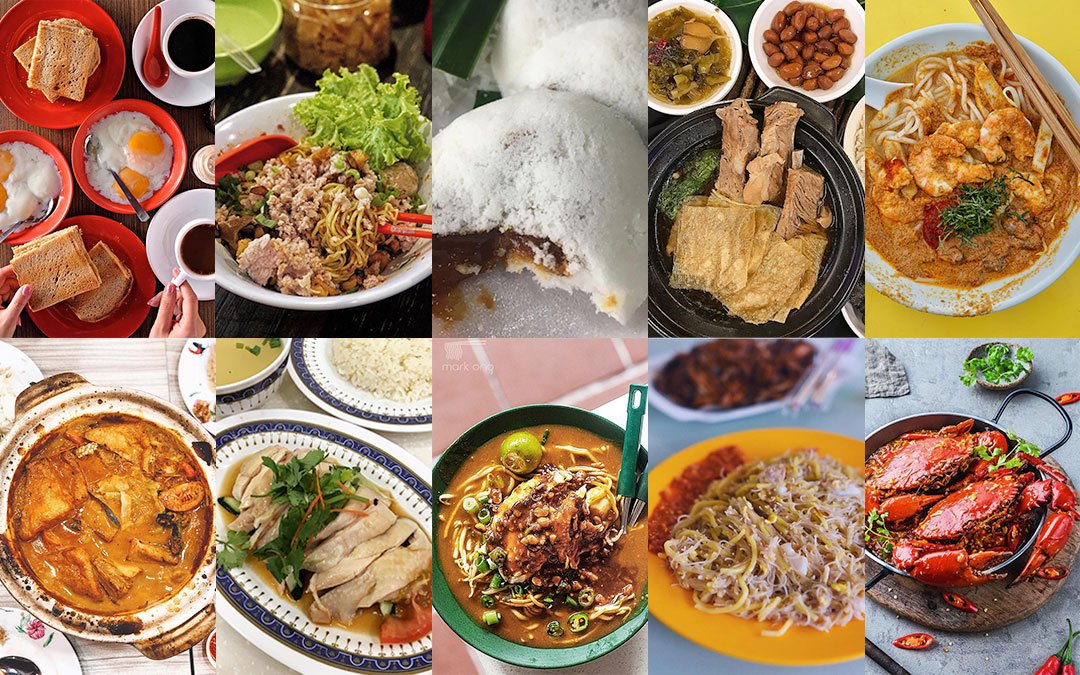Nothing stokes the flames within Singaporeans quite like a good ol’ debate on which stall sells the best version of our favourite hawker dish.
So it shouldn’t come as a surprise when eating is often hailed as Singaporeans’ undisputed favourite pastime (aside from queueing, although I must say, much of how we judge which stall to eat is by the length of queues, but I digress).
We owe a lot of our favourite hawker dishes today to the influx of immigrants that came from around the region with Sir Stamford Raffles’ arrival in 1819. Most of them were traders who, apart from setting up their businesses, brought with them their religious practices, cultures, and most importantly, food.
Take for example Tu Tu Kueh, which was brought over by people from the province of Hui’an, China. Tu Tu Kueh got its name from the sound the charcoal steamer (which was used back in the day) makes when steaming was done.
In the past, Tu Tu Kueh was primarily a dish that used plain rice flour, but today one can often find different fillings ranging from coconut to peanut. Most assuredly at that time, all of the Tu Tu Kueh stalls were run by people from Hui’an and were all surnamed “Tan”. Tan’s Tu Tu Coconut Cake, which is said to be one of the first Tu Tu Kueh makers who came over in 1932, is now being run by the 4th generation.
And that, my friends, is just one of the many dishes which lay claim to some form of heritage in Singapore.
Inspired by Culture Trip’s history of Shanghai in 7 dishes and Roads and Kingdoms’ own edition for Singapore, we take a look at how Singapore came to be through our palates and our stomachs, conflating Singapore’s rich ethnic and diverse history with dishes that form the bedrock of our hawker culture.
Chicken Rice
Photo by makan.wiki.sg via Instagram
We start off with perhaps the quintessential Singaporean dish – Chicken Rice.
Chicken rice is a stalwart dish in Singapore’s hawker culture. Stop at any coffee shop or hawker centre and you’ll be sure to find at least one stall selling the dish. At the famous Maxwell Food Centre located in Chinatown, along with the Michelin Bib-Gourmand Tian Tian Hainanese Chicken Rice, I count no fewer than 5 stalls selling this humble rice dish.
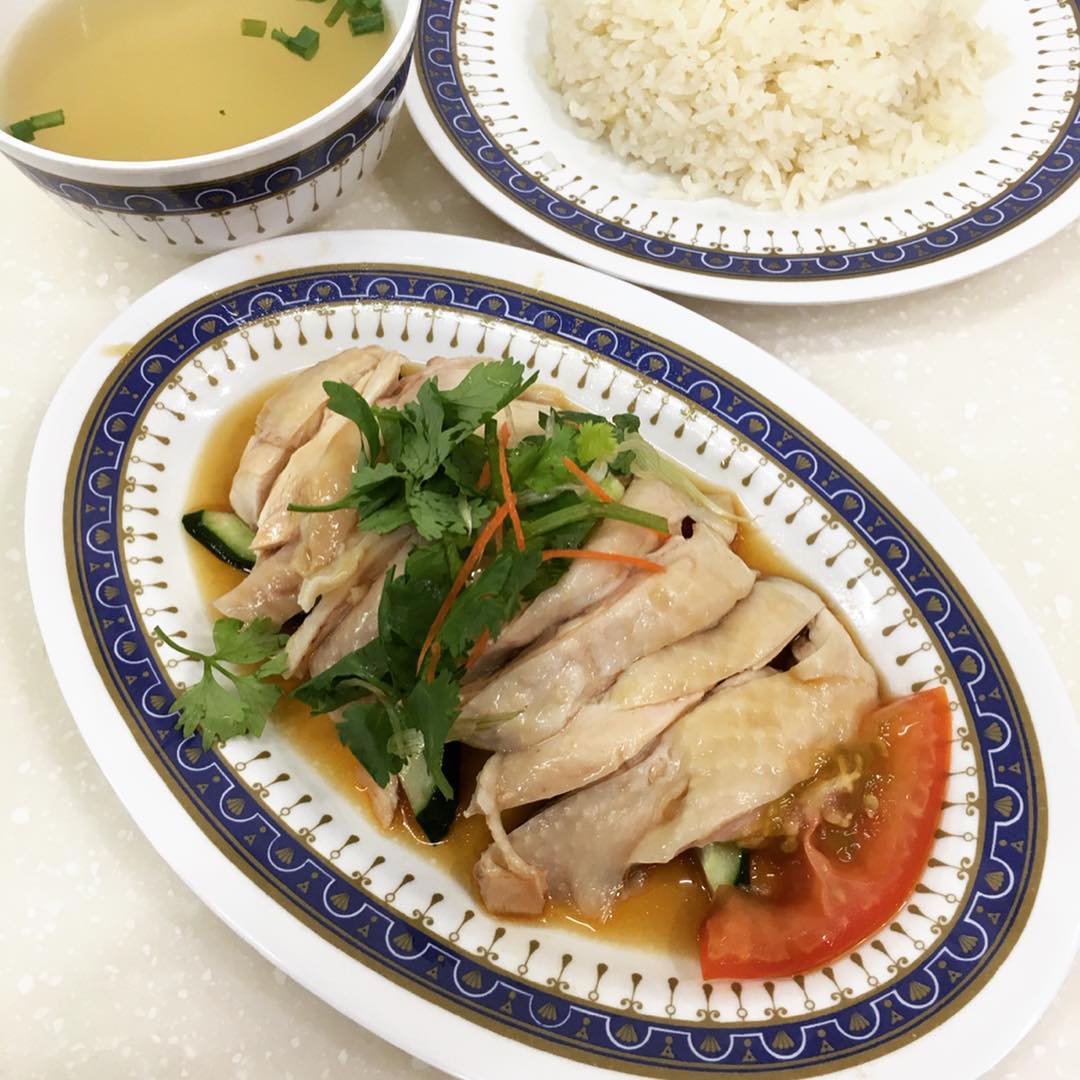
When a Singaporean Instagram page that delivers a different chicken rice post every single day has a reach of 13k followers, you know our love for Chicken Rice runs deep. As of this writing, the dedicated Instagram account owner has eaten a whopping 480 different plates of chicken rice.
Chicken Rice, or more properly Hainanese Chicken Rice traces its origins back to the Hainan province in Southern China, though the version we have grown to love is an adaptation with a touch of Cantonese influence.
The dish at its core, is deceptively simple – poached white chicken (there is also the roast variation) sitting on a bed of rice with soy sauce and a garlic chilli dip on the side. In Hainan, wen chang chicken is used, which is a smaller and bonier animal, giving the resulting dish a much more lean and fibrous bite. The version we’re used to favours younger and tender chickens, a preference derived from Cantonese cooking.
And so evolved the Singaporean Chicken Rice, a blending of Hainanese origins with Cantonese influences resulting in a staple dish that has enraptured the heart of a nation.
Hokkien Mee

Photo by thechosenglutton via Instagram
Hokkien Mee is one dish that often incites polarising views across the country. Unlike Chicken Rice, there are two common variations of Hokkien Mee. There are die-hard supporters that will stand fervently behind the wet version and there are loyalists that will champion that Hokkien Mee should be dry. Well, regardless of which version you prefer, Hokkien Mee is indubitably a well-loved hawker dish.
And for a dish that is so widely loved, there is hardly a consensus on the origins of Hokkien Mee. The most popular narrative revolves around Hokkien sailors who’s said to have created this dish some time in the 1930s. They used to work in noodle factories and would fry up excess noodles over charcoal fire along Rochor Road. Another suggested the dish originates from a stall next to the old 7th Storey Hotel near Rochor Road. And that was how Hokkien Mee got its original name of Rochor Mee.
It’s hard to nail down the exact origins of Hokkien Mee (some accounts even date it back to the 1880s), but what’s certain is the dish’s signature combination of yellow noodles, bee hoon, seafood, and pork brought together with a prawn/pork stock will never cease to amaze.
And that stock, oh that heavenly stock. When done right, there’s nothing quite like it.
Fish Head Curry

Photo by acinlie via Instagram
Make no mistake, Fish Head Curry was created by an Indian cook, but it was conceived for the local Chinese community. Hailing from Kerala in Southern India, J. M. Gomez is widely regarded as the creator of Fish Head Curry, selling his first dish from his stall along Sophia Road in 1949.
In actuality, fish head is neither an Indian ingredient or favoured by the Indians. The story goes that Gomez prepared this dish for his Chinese customers for he believed fish head was well-loved by the Chinese. Seeing as to how the dish has become a Chinese delicacy being offered in both Indian and Chinese restaurants alike, we guess Gomez was right.
At its foundation, you’ll find a fish head bubbling away in a thick curry made from rich spices. Some places may add a tinge of tamarind to give it a sour and tangy finish or milk for a nice creamy texture.
Laksa
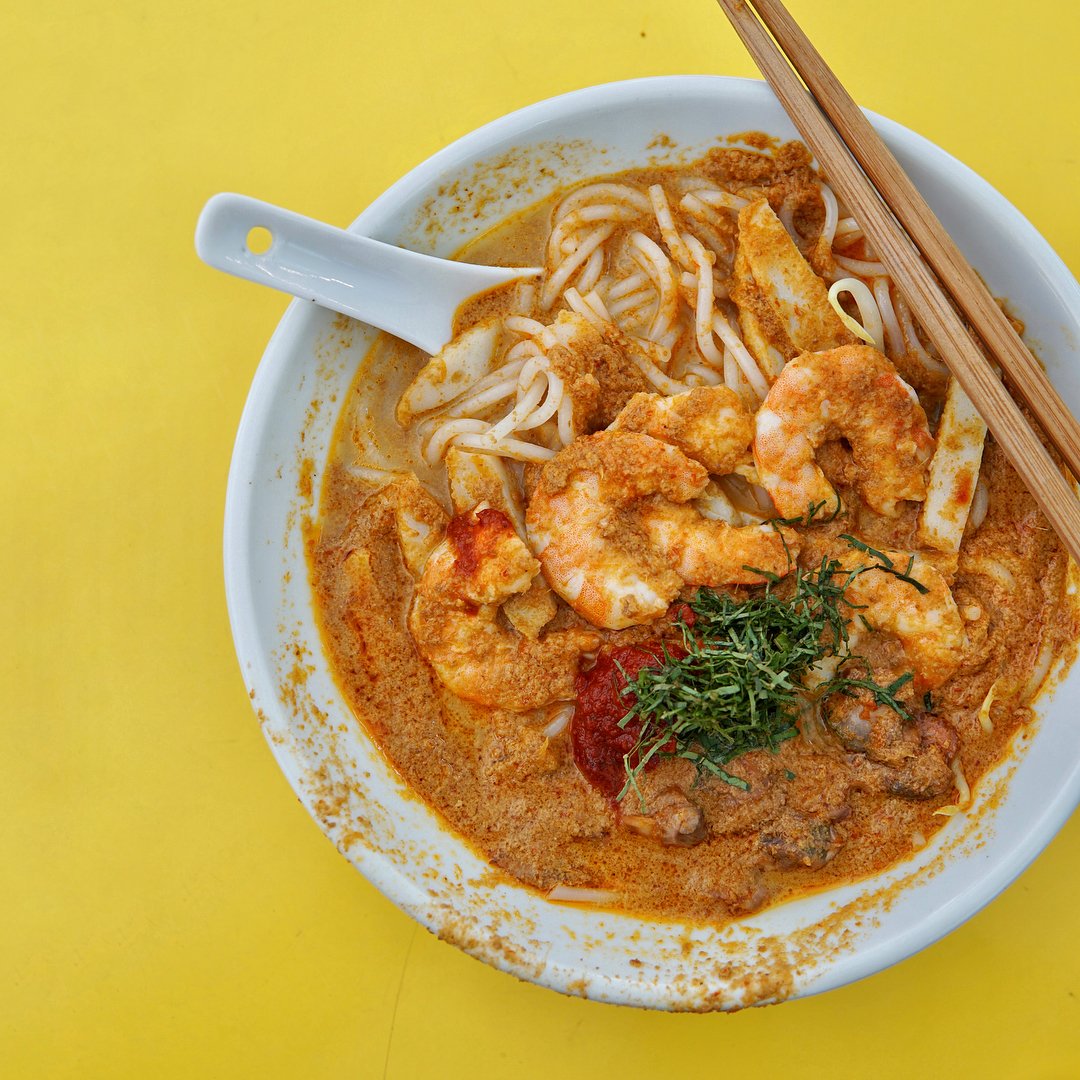
Photo by crappysotong via Instagram
Oh my, in my book, there’s nothing better than a comforting bowl of Laksa on a cold, rainy day.
There are many variations of Laksa, but the ones you find in Singapore are predominantly Nyonya or Peranakan in nature. Most famous is Katong Laksa that has spread all over Singapore today, thanks to franchising.
A good hearty bowl of Laksa often features thick vermicelli noodles (sometimes cut up into shorter pieces) with prawns, tau pok (tofu puff), fishcake, cockles, and a spoonful of sambal. Nyonya laksa features a base of dried chillies balanced out with creamy coconut milk which gives it that iconic, rich spicy broth.
The Peranakan community we see in Singapore traces half its roots back to Mainland China’s Southern Provinces. The other half? The local Malay women. The mixing of Malay and Chinese bloodlines began when Chinese traders came over as early as the 15th Century and married into the Indigenous population, not only in Singapore, but much of Southeast Asia as well by way of the spice route.
Aside from being an iconic comfort food, Laksa provides a glimpse into the Peranakan culture and it’s unique heritage that has birthed some of the best food, culture, and history of our island.
Putu Piring
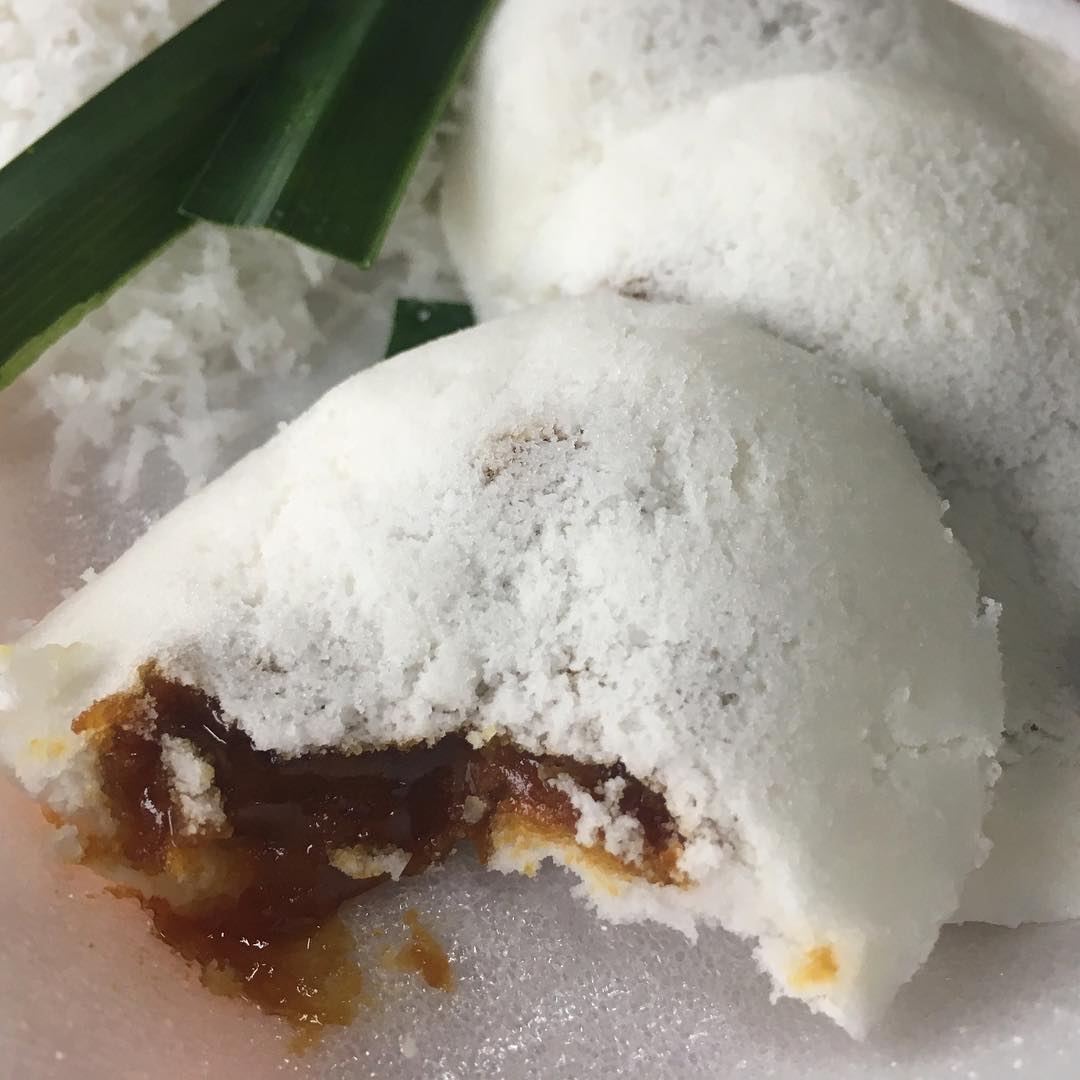
Photo by willcookwilleat via Instagram
Putu Piring is a round, steamed rice cake filled with gula melaka (melted palm sugar) and topped with coconut shavings.
At a cursory glance, Putu Piring is reminiscent of Tu Tu Kueh, and to the untrained eye, it’s easy to confuse the two. However, the former traces its roots to India, employing much of the same ingredients as Putu Mayam (Southern India String Hoppers).
Steamed and shaped by conical mounds into circular mounds, the middle is filled sweet gula melaka and covered up with more rice flour. There’s just something about gula melaka and its natural sweetness that just lifts this simple rice flour cake into something heavenly. The freshly grated coconut is just the tropical cherry on top.
Chilli Crab
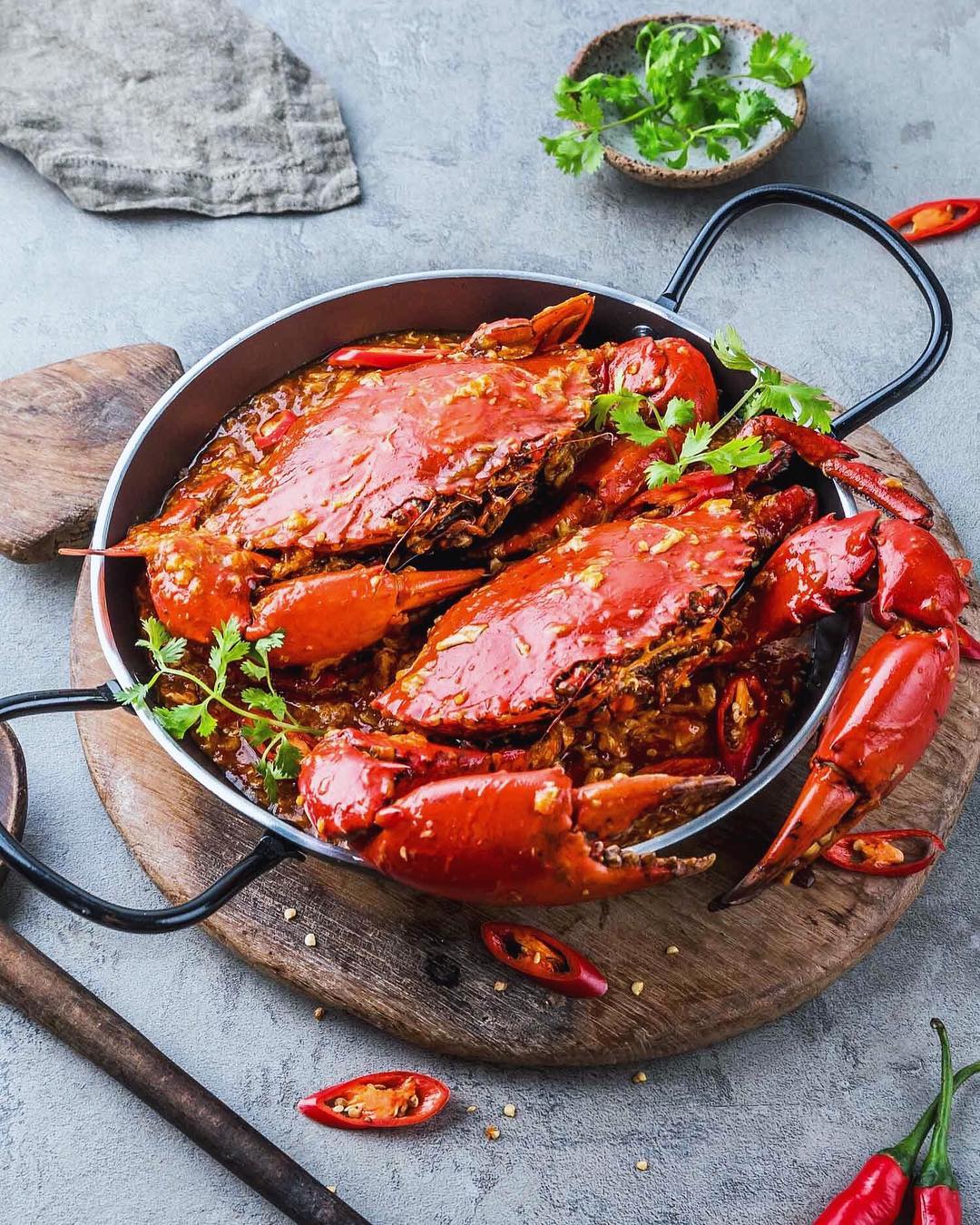
It was in the mid-1950s when Cher Yam Tian added bottled chilli sauce to her usual tomato sauce base when deep-frying crabs at her pushcart along the Kallang River she shared with her husband. That was the birth of the chilli-and-tomato-sauce concoction that we’ve come know and love today.
Soon enough, business was so good that the limited wooden tables and chairs could hardly accommodate the growing throng of customers. By 1962, the couple opened their family-run Palm Beach Seafood Restaurant which they helmed for 22 years.
Their son, Roland Lim, started working at Palm Beach before joining his godfather, Chef Sin Leong who was widely regarded as one of the four heavenly kings of the 1950s and 1960s, instrumental in shaping Chinese cuisine. When Sin Leong retired, he passed the business on to Roland which ushered in a new era, with the restaurant changing its name to Roland Restaurant.
The chilli crab we know of today evolved from the bottled chilli sauce of yesteryear, presenting more complex flavours with the inclusions of egg and sambal. Though, you can still find the original version being whipped up in the kitchens of Roland Restaurant.
Bak Kut Teh
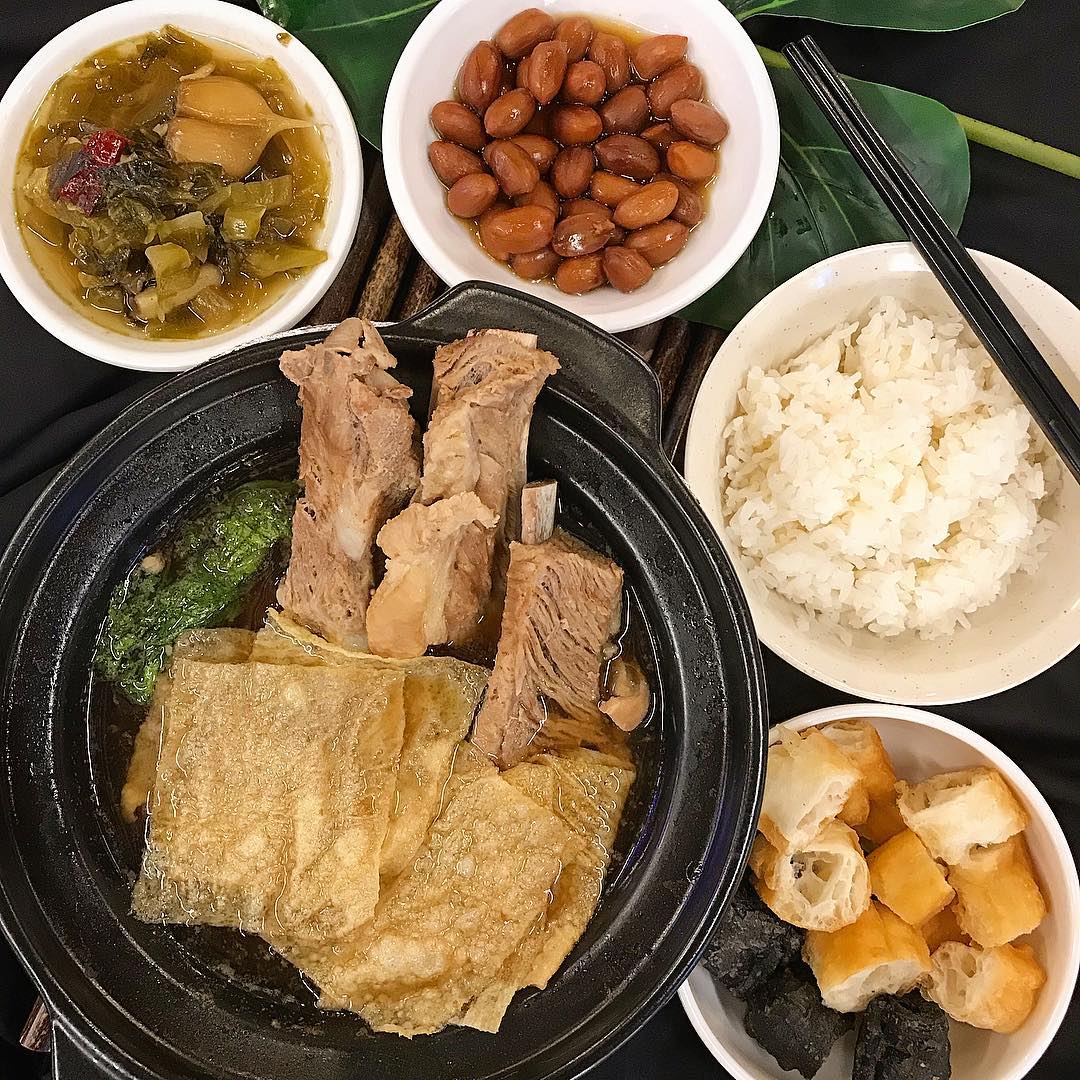
Photo by nikolai_wee via Instagram
Singapore in the 19th century was a strategic entrepot, drawing merchants and labourers from around the region.
The Singapore River was one of the busiest districts back in the day where coolies would toil for days on end loading and unloading sacks of rice and other goods. It was said that Bak Kut Teh (Pork Bone Soup) was invented as a dish to provide an early morning energy boost for these coolies. That’s where consensus for the origins of this dish would end. Chinese immigrants from the Chaoshan region of China’s Guangdong province claimed they brought the recipe while some argued it was the Hokkiens from the Fujian province.
No matter the case, Bak Kut Teh features a soup that is eaten with a side of rice and chopped red chilli in dark soy sauce. Typically today, you’ll find a side of You Tiao (Deep-fried Dough Fritters) sold as an accompaniment to Bak Kut Teh as well.
Personally I’d opt for the Teochew version which is more light and peppery, but I know of people who swears by the Hokkien style which offers a more robust and herbal flavour. Bak Kut Teh is one of those dishes that starts off as a perk-me-up but most assuredly leaves me in a food coma by the end of it.
Mee Rebus
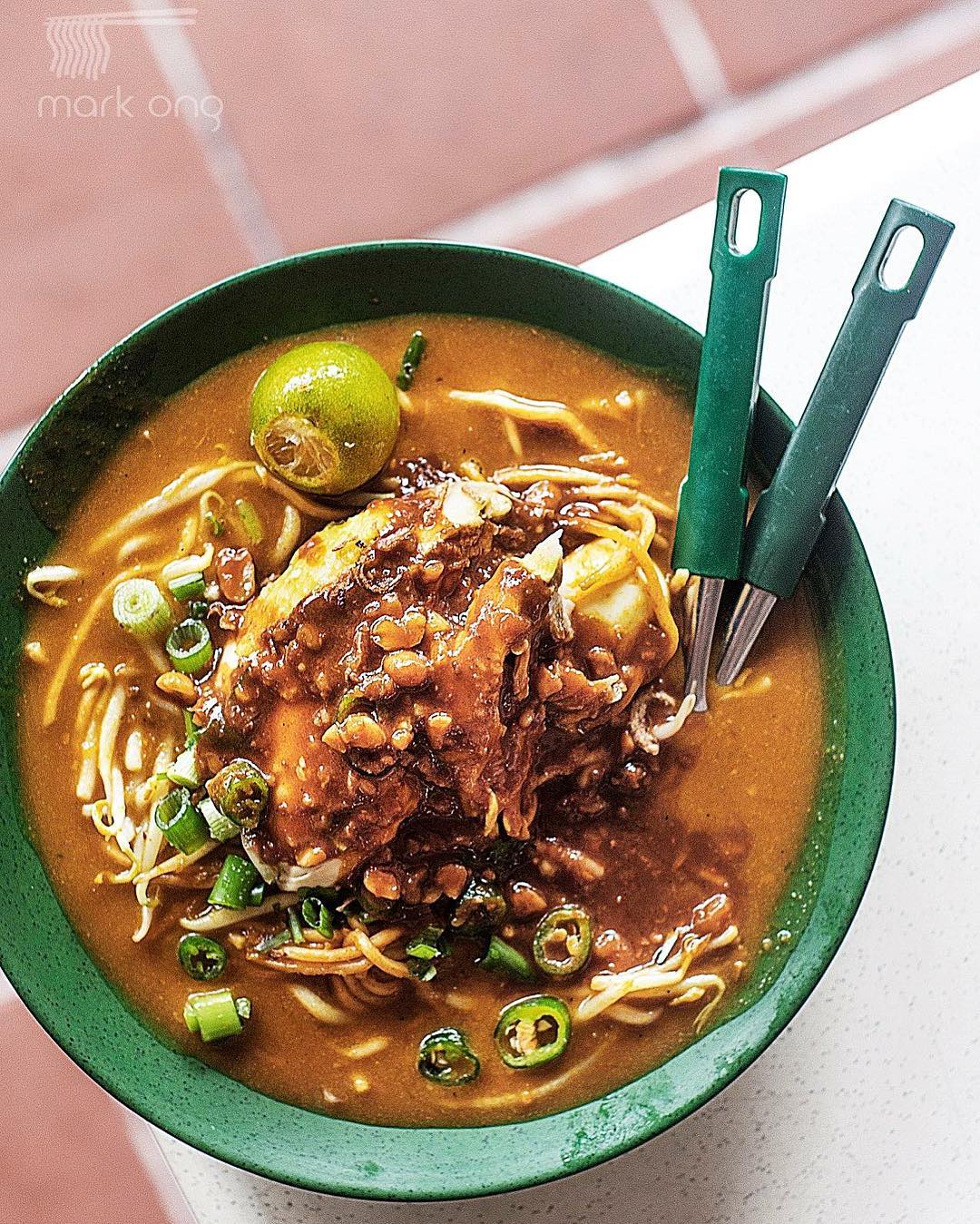
Photo by makoeats via Instagram
Mee Rebus is commonly thought of as a Malay dish, and it predominantly is, and should be considered so. What many are unaware of, however, is that the yellow noodles found in the dish are your typical Chinese egg noodles.
As such, many acknowledge the obvious Chinese influence in the dish. Most believe that Mee Rebus originate from the Indonesian Islands of Jawa, where the dish is known as Mee Jawa. Others believe the dish originated in the Northern part of Malaysia where it was brought southward by Indian Muslim peddlers.
Usually a breakfast dish, one would typically find blanched egg noodles mixed with really what can be described as a smorgasbord of ingredients – hard-boiled egg, shrimp, chicken slices, boiled potato, spring onions, fried shallots, beansprouts – just to name a few.
The dish is brought together by a thick, curry-like gravy which is part sweet and part spicy. If that doesn’t get your mouth-watering, we don’t know what will.
Kaya Toast
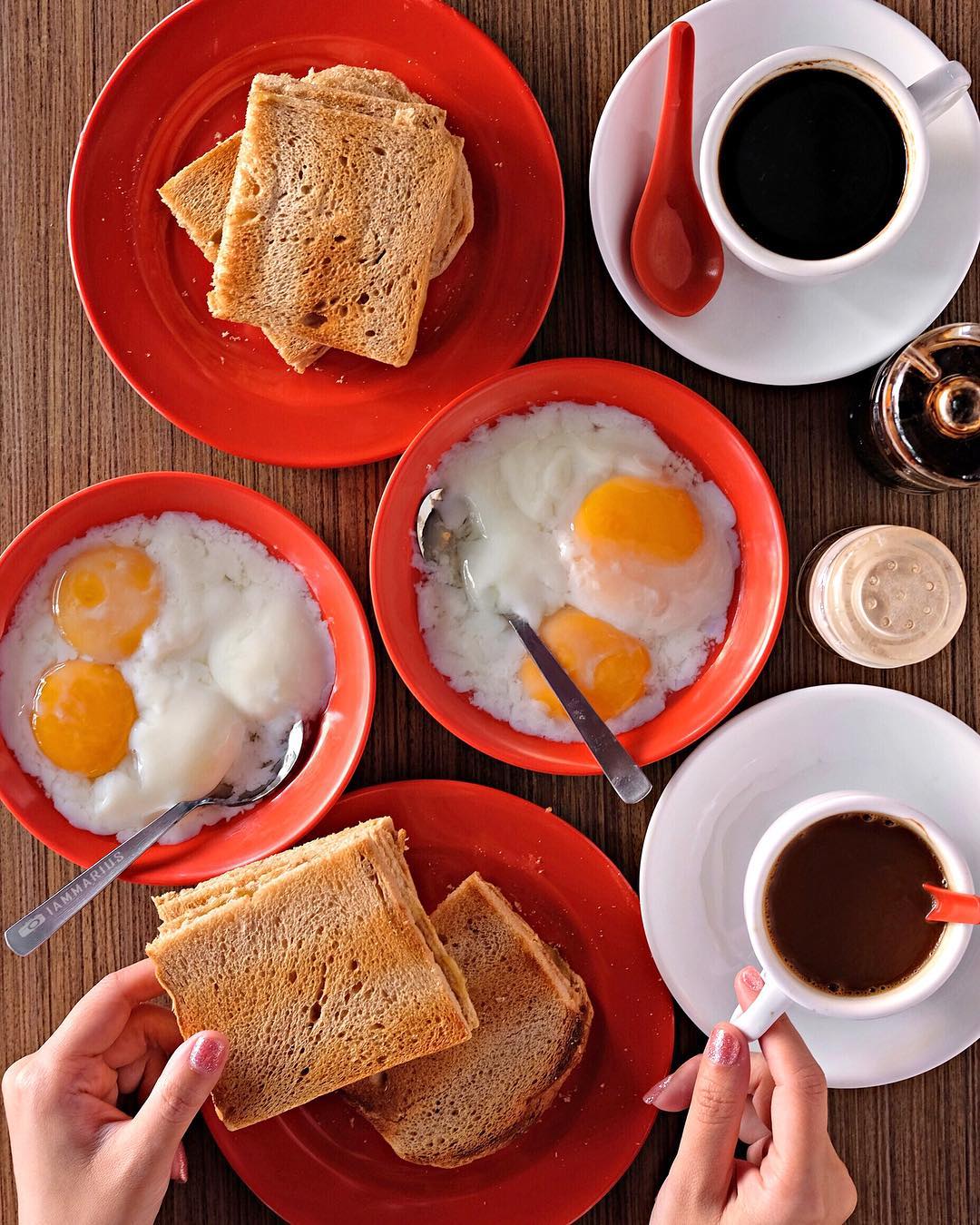
Photo by iammarius via Instagram
It’s up for debate whether Chicken Rice, Chilli Crab, or even Bak Chor Mee is the true ambassador for Singapore’s cuisine, but Kaya Toast is without a doubt the undisputed champion when it comes to a classic Singaporean breakfast.
Said to have originated from the Hainan province, Kaya Toast was created by the Chinese immigrants when they sailed to Singapore some time in the 1930s. Legend goes that Hainan cooks sailing on British ships were tasked to replicate fruit jam but only had coconut, eggs, and pandan leaves at their disposal.
Thus was Kaya created, a spread made from coconut, egg and sugar, and flavoured with pandan (screwpine). Spread generously on crisp toast and balanced with a good dollop of butter, Kaya Toast is usually served with two soft-boiled eggs and cup of local kopi (coffee) or teh (tea).
The incongruous combination provides good synergy of flavours and textures when it all comes together, making Kaya Toast the quintessential Singaporean breakfast.
Bak Chor Mee
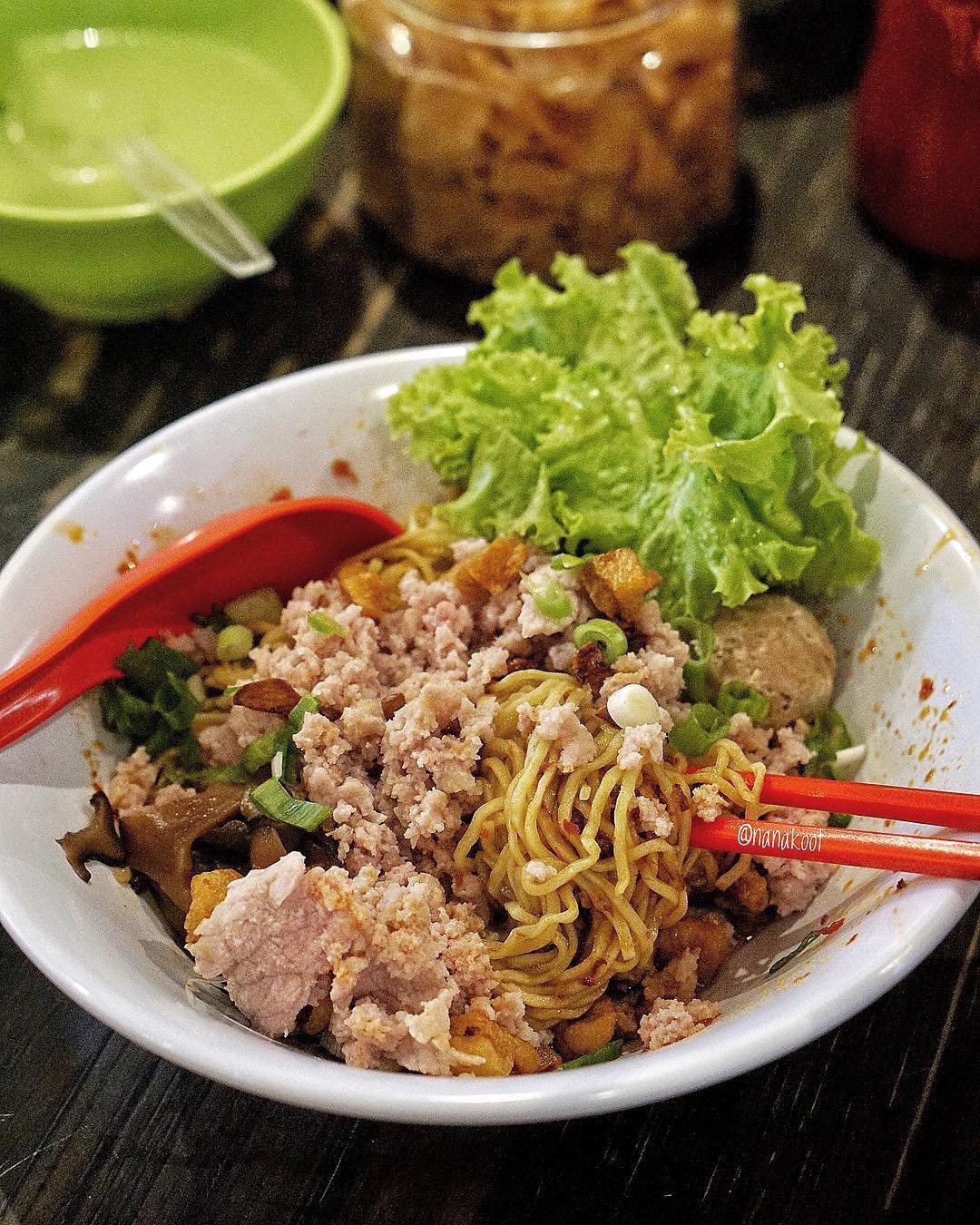
Photo by bakmiclubid via Instagram
Bak Chor Mee is loved by almost everyone, but somehow it just never gets talked enough about in the discussion for the best Singaporean dish. I mean, one of the only two Michelin Star hawker stalls sells this noodle dish for crying out loud. And yet, it languishes in the shadows of the giants.
Translated into Minced Meat Noodles, the dish is of Teochew origin, but there is hardly information about how, when, and why it has ended up on our shores. Which is interesting seeing as you can find one stall at almost every hawker centre and food court.
It is often enjoyed dry, but the residents in Bedok would stand loyally by their soup version. No matter the version, you can either have it with mee kia (thin wheat noodles) or mee pok (flat, broad wheat noodles). The noodles are then tossed with minced meat, meat balls, pork slices, stewed sliced mushrooms, and bits of pork lard – along with a mixture of chilli paste, vinegar, soy sauce and oil.
Call me biased, and I certainly am, but give me one bowl of Bak Chor Mee and you can carry on with your debates about which dish best represents Singapore.

